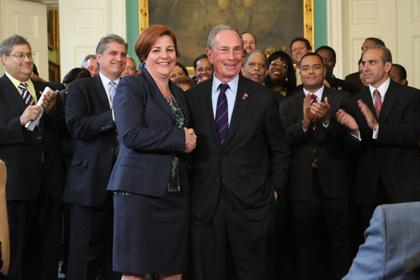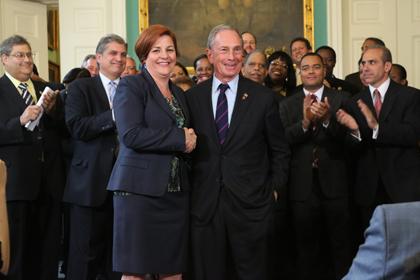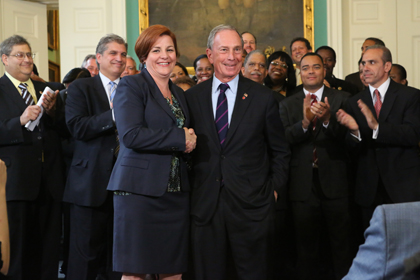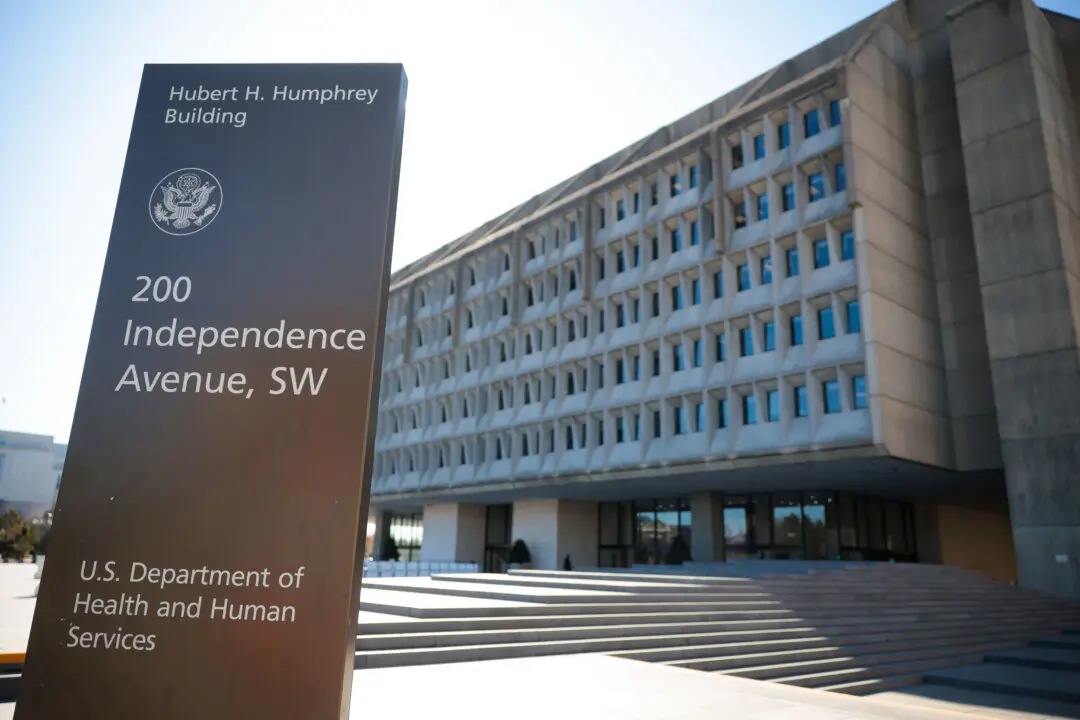NEW YORK—After months of New Yorkers protesting against proposed cuts to areas close to their hearts—such as firehouses, libraries, and after-school programs—the City Council and the mayor’s office announced an agreement for the city’s budget that will restore many millions of dollars to these areas.
Restorations include adding about 1,000 teachers and not laying off 250 school aides; funding of almost $90 million for libraries; and approximately $150 million for early education, child care, and youth services. The council also said it prevented closing 20 fire companies.
Funding cuts for Out-of-School Time, an after-school program, were going to slash tens of thousands of children’s slots. But now, according to a City Council statement, all these slots have been restored.
“Members of the public from across all five boroughs told us what was important to them and what needed to be done,” stated Councilman Domenic M. Recchia Jr., Finance Committee chair, in a release. “This was a team effort and, considering the challenges we faced from a struggling economy and reduced government aid, it was a success.”
Yet amid the announced agreement comes the forecast for the following year’s budget—the city will face a shortfall of approximately $2.5 billion in fiscal year 2014.
Balancing the books
In balancing the upcoming fiscal year 2013 budget—which is required by law—elected officials resorted to what budget experts describe as “one-shot” measures, or actions that only have a one-time effect and are not recurring. Relying on the sale of 2,000 yellow taxi medallions is one example of such a one-shot measure, though the announced agreement did lower expected revenue from $1 billion to $635 million.
“Based on available info, about $4 billion are used in one shot to balance the budget,” said Maria Doulis, director of city studies for the Citizens Budget Commission. “The problem with that is you are basically delaying any action that you have to take later on, so you’re depleting your resources and reserves, and you’re just in a tough spot for next year.”
A budget’s structure provides the key for future stability, Doulis said. Altering the city’s health insurance agreement with retirees and people currently employed could be one way to improve the city’s finances. Currently, neither group contributes to their health insurance premiums. The commission estimates $1 billion to $2 billion in added revenue if the two groups were made to contribute.
Doulis also recommended the city “take a harder look at the capital budget,” since numerous capital projects—including $40 billion planned for 2012–2016—have increased the debt, and in turn debt service fees.
The ‘budget dance’
Mayor Michael Bloomberg presented the $68.7 billion preliminary budget in February. Since then, the City Council has been working on staving off cuts to numerous areas including firehouses, and multiple child and youth service areas.
But working all spring on budget restorations to areas that are often restored at the last minute may have left other areas unaddressed.
“What’s not addressed in the budget is the fact that we still have a very weak economy, with sky high unemployment and a lot of family economic distress, caused by the recession and a weak recovery,” said James Parrott, deputy director and chief economist at the Fiscal Policy Institute. “There’s very little in the budget that addresses those hardships that exist in the city economy—that should have been the real focus of the budget discussion this spring, rather than the usual budget dance.”
Seven city agencies that deal with human services, including the Department of Aging, the Administration for Child Services, and the Health and Hospitals Corporation “have basically the same amount of funding they had before the recession,” Parrott said. “But that hasn’t kept pace with the inflation that’s occurred since then.”
With 7 to 8 percent inflation, the seven agencies have “endured effectively real cuts in their spending levels,” Parrott said, “whereas many other areas of the budget have grown by twice the rate of inflation since the recession started.”
Constrictions overall for funding partly stem from decreased state funding, said Parrott, such as steep cuts in the two previous years to the city’s Department of Education, which has led to the city spending more on the department.
With only limited information available about the proposed budget changes “there’s still a lot to learn about the details, for the child care, for example,” said George Sweeting, director of the Independent Budget Office.
Before City Council votes on the final budget, a resolution that itemizes all the restorations will be made public. A vote is expected this week.
The Epoch Times publishes in 35 countries and in 19 languages. Subscribe to our e-newsletter.







